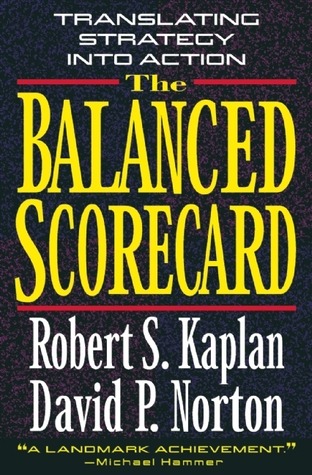The Balanced Scorecard Summary
6 min read ⌚
Translating Strategy into Action
Can you imagine how easier it would be if businesses could balance between customer knowledge, internal business processes, financial measures and learning and growth?
“The Balanced Scorecard” does just that! It converts vision and strategy into an understandable set of performance measures and balances between short and long-term objectives, desired outcomes and actions.
We all remember Abraham Lincoln who once said: The future is exciting, and the best thing that comes from it is the gradual and slow life improvement, not any sudden changes.
With no disrespect to Lincoln’s wisdom, Balance Scorecard reveals that future come much sooner than you think, and the digital age that we live in changes every second.
Stay with us on this journey through the pages of this highly useful book.
Who Should Read “The Balanced Scorecard”? and Why?
When we mention the word-Balance Scorecard, it associates us with some business and organizational change.
Senior executives and CEOs are the targeted groups of individuals that Robert S. Kaplan and David P. Norton are trying to revive and energize.
By all means, they are the best candidates for grasping the benefits that Balance Scorecard has to offer.
E-business students fall into the same category.
In almost every Faculty of Economics worldwide, the students are learning the secrets Balance Scorecard.
Here, the e-business students especially those eager and thirsty for more knowledge are going to understand the relevant importance of performance measurement changes in every Industry.
People in business, students, and executives are welcome to test the effectiveness of the Kaplan and Norton’s performance measures systems and implement their strategies by using Balanced Scorecard’s methods.
About Robert S. Kaplan and David P. Norton

Robert S. Kaplan is a professor born in 1940, New York- United States.
He is renowned for his development of leadership at Harvard Business School as a professor, and as an executive of the Balanced Scorecard Group.
 David P. Norton (born 1941) is an American-born business theorist, author, senior executive, and a prominent management consultant.
David P. Norton (born 1941) is an American-born business theorist, author, senior executive, and a prominent management consultant.
He graduated from Harvard University, meanwhile obtaining a Doctorate of Business Administration.
Robert S. Kaplan co-authored The StrategyFocused Organization and Strategy Maps book with his well-renowned fellow executive David P. Norton, which is also the co-founder, and president of the Balanced Scorecard Groupon.
“The Balanced Scorecard Summary”
How can we describe the Balanced Scorecard?
Well, we can say that it is a discretely selected series of quantitative measures that derive from the company’s organizational management system and strategy.
Many executives and managers wait for a crisis in performance before they decide to implement the actionable techniques deriving from this system thoroughly. The design is the primary tool of any mechanism, and you may want to allocate more time for understanding its features.
It’s more than evident that the associates you work with, and your staff need a fully-functional system. Most importantly, you want to make sure that the processes you are enforcing are suitable for that environment.
Being one step ahead of any danger that may be lurking is a strategy you might want to keep your focus on. On top of that, management is a process that relies on planning, and it’s logical to weed out all destructive tendencies and activities.
Let’s get back to the beginning:
The Balanced Scorecard as a performance measurement book was firstly published back in 1996.
It represents a management classic writing that develops a common platform in the middle of conventional and, short-term faced different management system approaches and a more stabilized attitude towards integrating new measurement types that are intertwined into one entire strategy.
Now, let’s talk about what the Balanced Scorecard does and in what ways companies can use it.
Balanced Scorecard has a task to intrigue and challenges senior managers by looking them directly into the eye and telling them, “To reconsider their organizational measurement perspective and start getting ready for the future.”
Many executives take this challenge seriously but struggling to apply any change or upgrade their existing performance metrics.
However, a small portion of these executives counters company’s traditional management system by enforcing tangible assets and by adding several nonfinancial measurements to the “instrumentation cabin” that clarifies how to improve corporate’s strategic management system.
Of course, despite all the positive features that Balanced Scorecard has to offer, several organizational issues cannot be neglected.
Senior Managers are aware of the fact that for a Balanced Scorecard performance measures to be applied as planned, company’s CEOs must accept every feedback from all organizational layers.
Robert S. Kaplan and David P. Norton are encouraging companies to at least try to become one of the 300 significant organizations that tend to reinforce functional silos and that are using this system for more efficient operational activities and future expectations.
The Balanced Scorecard perspectives are insisting on examining different strategies and choosing the most appropriate one.
The strategy must be covered by a well-defined and clear long-term vision that would represent one common organizational goal.
Next, we move on to the key lessons that “The Balanced Scorecard” offers.
Key Lessons from “The Balanced Scorecard”
-
- Understanding customer’s point of view
-
- Internal operations and business strategist
-
- Company’s Financial Metrics
- Staff’s learning and growth possibilities
Understanding customer’s point of view
The Balanced Scorecard must assess company’s capacity to reach its outlined strategic and management objectives related to customer’s satisfaction and overall shopping experience in the marketplace.
For a company to successfully select the much talked about strategic performance measures it must answer three vital questions: What is our target group of customers?
How can we identify our value proposition in serving those customers?
How can we understand customer’s needs, wants, and demands? Sometimes companies experience “bumpy road” to reach their final destination.
Strategic performance measures are an indispensable part of the company’s long-term financial and operational success,
The very foundation of these measurements contains “measuring the market share,” “customer retention,” “Reaching new potential customers ” “Pareto’s 80:20 customer satisfaction” and “measuring profitability.”
Internal operations and business strategy
Company’s internal processes are as vital as the external ones. They emphasize how a company designs and develops a new tangible or intangible products and services, and what is the market’s response to them.
Balanced Scorecard helps senior managers to assess business situations more precisely, by enabling them to understand internal business measures as:
- “The future percentage of sales from these new products and services that the companies are delivering to the end users,”
- “Assessing certain internal operations to find out more about your company’s ability to cope with the competitors and their existing products”
- “Having a clear vision for the next product generation”.
The executives may implement several other optional measurements just to make sure that their operational activities are aligned with company’s long and short-term plans.
Company’s Financial Metrics
Financial measurements are probably the most critical element of the Balanced Scorecard system; they are the foundation of profit/loss relations.
A company can put all their efforts on satisfying customer’s demands by continually trying to provide more value for the same amount of money and by competing with the competitors, but none of these factors won’t matter if there is no ROI.
Staff’s learning and growth possibilities
To sum it all up, none of these first three perspectives won’t count if there are no highly skilled and trained employees to provide first class products and services.
Like this summary? We’d Like to invite you to download our free 12 min app, for more amazing summaries and audiobooks.
“The Balanced Scorecard” Quotes
Today, organizations are competing in complex environments so that an accurate understanding of their goals and the methods for attaining those goals is vital. Share on X The Balanced Scorecard fills the void that exists in most management systems - the lack of a systematic process to implement and obtain feedback about strategy. Share on X Historically, little attention has been devoted to developing performance measures for product design and development processes. Share on X Executives use the many elements of their management system to orchestrate their agendas. By building the management system around the scorecard framework, they can achieve the ultimate payoff - translating strategy into action. Share on X A good Balanced Scorecard should have a mix of outcome measures and performance drivers. Outcome measures without performance drivers do not communicate how the outcomes are to be achieved. Share on XOur Critical Review
This book is a beautiful read full of information on strategy execution, as well as a range of tools that can be used to measure the success of implementation.
However, a portion of the data is outdated and do not work as well in today’s market in which technology advancements immensely increase competition.
In any case, it is a good book, which covers the basics that any business person should know.
Emir is the Head of Marketing at 12min. In his spare time, he loves to meditate and play soccer.








